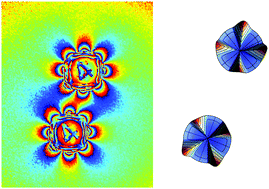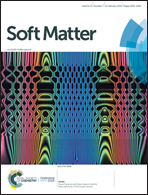The near and far of a pair of magnetic capillary disks
Abstract
Control on microscopic scales depends critically on our ability to manipulate interactions with different physical fields. The creation of micro-machines therefore requires us to understand how multiple fields, such as surface capillary or electro-magnetic fields, can be used to produce predictable behaviour. Recently, a spinning micro-raft system was developed that exhibited both static and dynamic self-assembly [Wang et al., Sci. Adv., 2017, 3, e1602522]. These rafts employed both capillary and magnetic interactions and, at a critical driving frequency, would suddenly change from stable orbital patterns to static assembled structures. In this paper, we explain the dynamics of two interacting micro-rafts through a combination of theoretical models and experiments. This is first achieved by identifying the governing physics of the orbital patterns, the assembled structures, and the collapse separately. We find that the orbital patterns are determined by the short range capillary interactions between the disks, while the explanations of the other two behaviours only require the capillary far field. Finally we combine the three models to explain the dynamics of a new micro-raft experiment.



 Please wait while we load your content...
Please wait while we load your content...